Bryan Stuart Prefab House
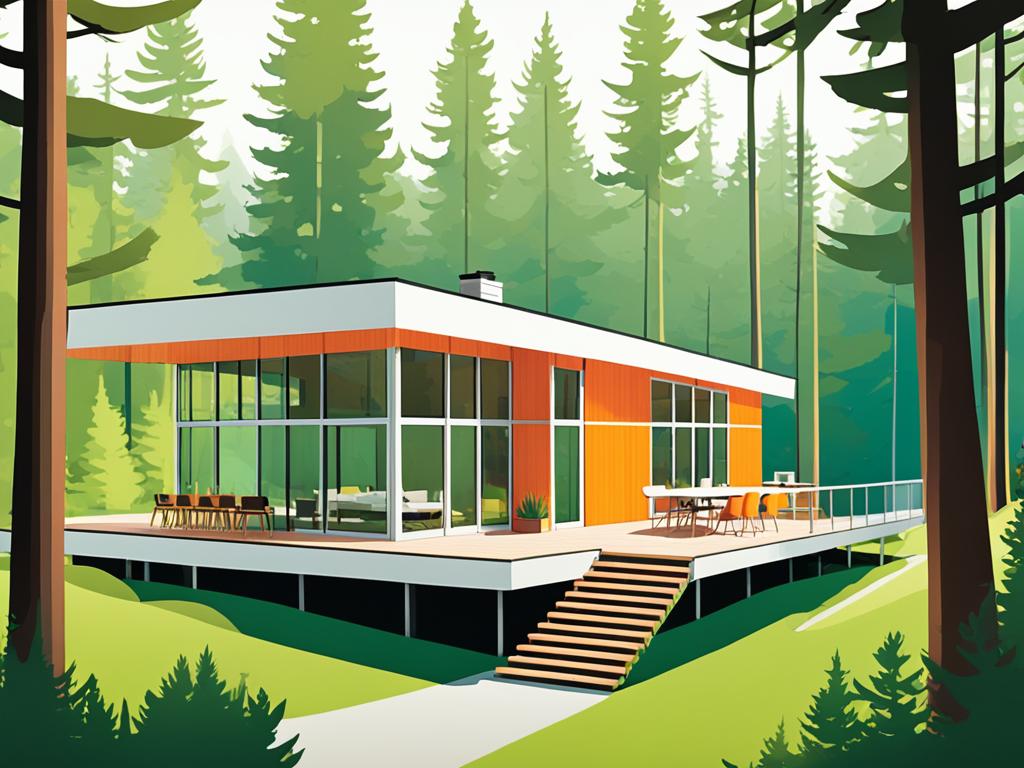
Bryan Stuart, a local councillor in rural Aberdeenshire, has designed and built a prototype for affordable timber kit houses. His Model D house is made entirely from Scottish timber and aims to address the lack of affordable housing in rural communities. The house has gained approval for its sustainable design and low running costs.
Key Takeaways:
- Bryan Stuart has designed and built an affordable timber kit house called the Model D.
- The house is made from Scottish timber and aims to address the need for affordable housing in rural communities.
- The Model D house has gained approval for its sustainable design and low running costs.
- The construction process took around four years, but future self-builders can expect a shorter timeline of 12 to 16 weeks.
- Bryan Stuart continues to collaborate with Professor Gokay Deveci to create variations of the Model D house to meet specific needs.
The Design and Build Process
Bryan Stuart collaborated with Professor Gokay Deveci from Robert Gordon University to create an affordable house entirely made from Scottish timber. This innovative project, known as Model D, showcases sustainable design and promotes the use of Scottish timber in construction.
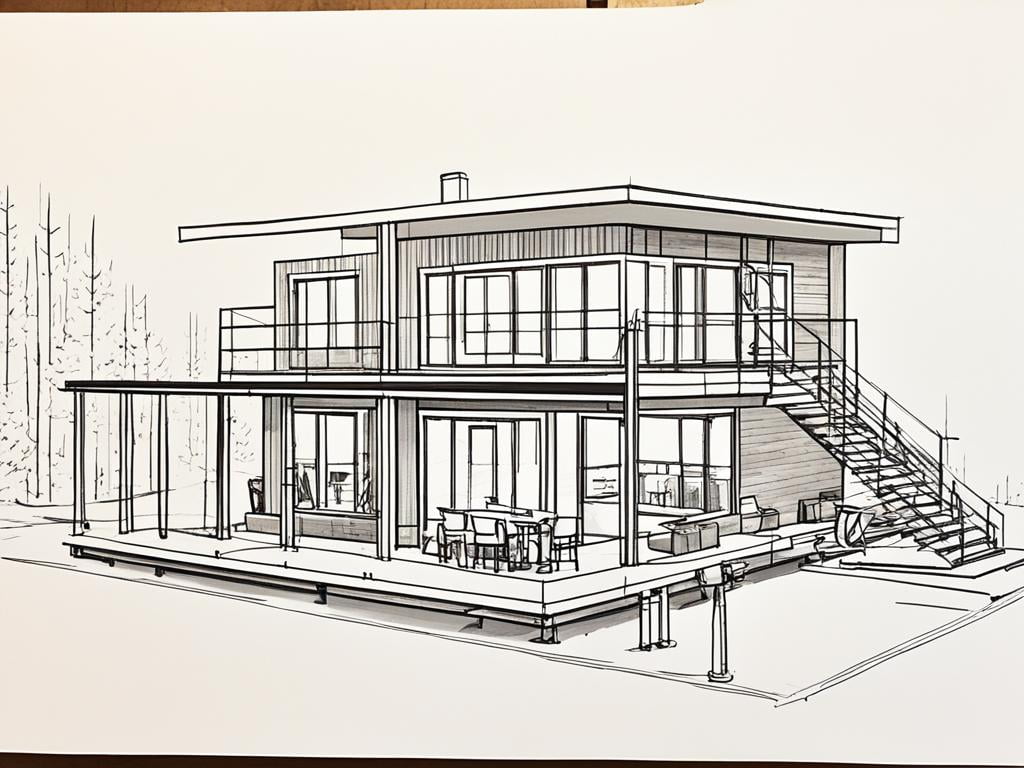
The Model D house features a rectangular shape with a steep pitched roof, providing a modern aesthetic while maximizing interior space. The design incorporates large windows and rooflights to harness natural light and reduce energy consumption.
The house comprises three bedrooms, two bathrooms, an open plan kitchen/living space, and a mezzanine area, catering to the needs of modern families. The layout ensures a harmonious flow between spaces, creating a comfortable and functional living environment.
The construction process for the prototype took around four years, involving meticulous planning and attention to detail. However, future self-builders can expect a significantly shorter timeline, typically ranging from 12 to 16 weeks, due to the refined design and optimized building process.
Sustainable Materials and Features
To ensure durability and low maintenance, the timber used in the construction of the Model D house was heat treated in Finland. The timber, including fast-growing Sitka spruce and Scots pine, was selected for its sustainability and performance.
The house also incorporates an innovative double-stud system for wall and roof construction, which maximises air tightness and helps meet Passivhaus standards. This not only enhances energy efficiency but also creates a more comfortable living environment.
Additionally, the external rain screening of the Model D house is made from heat treated larch. This not only provides a visually appealing timber cladding but also creates a micro-climate around the house, further enhancing its energy efficiency.
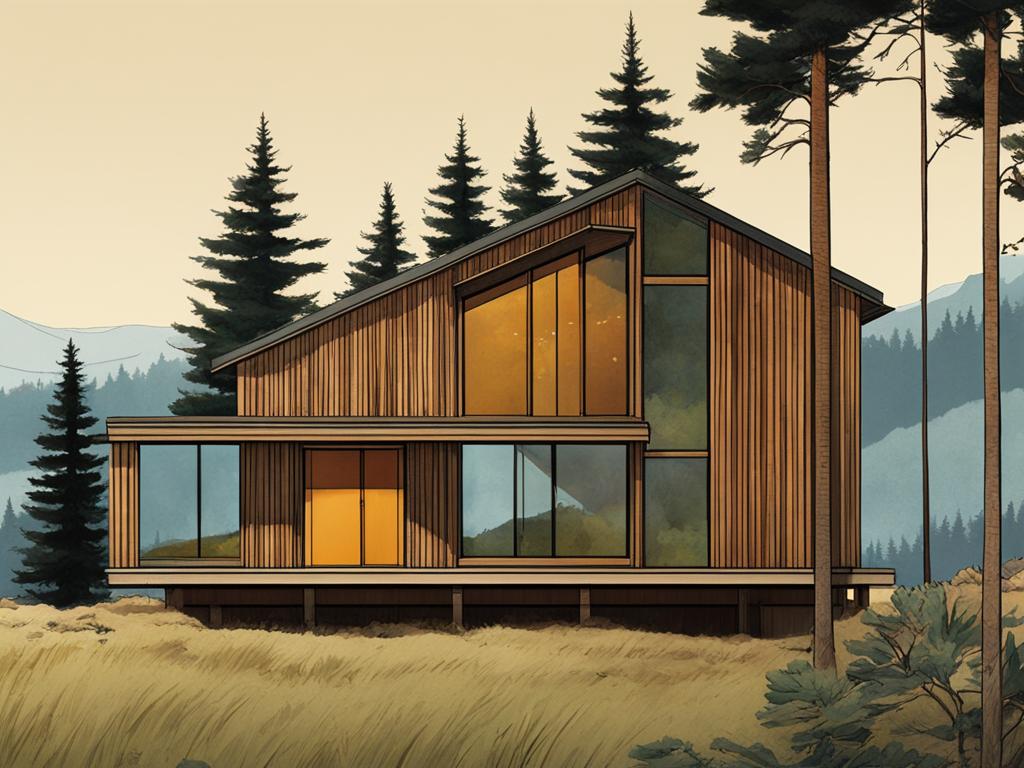
By utilising sustainable materials such as heat treated timber and implementing passive design principles, the Model D house exemplifies the importance of environmentally friendly construction practices. These features not only reduce the environmental impact of the house but also contribute to long-term energy savings and a reduced carbon footprint.
Interior Design and Features
The interior of the Model D house showcases a stunning combination of elegant design and functional features. With a focus on creating a bright and welcoming living space, Bryan Stuart has incorporated elements that epitomize modern interior design trends while retaining a sense of warmth and comfort.

The neutral finish of the walls, adorned with pale paint hues, creates a versatile backdrop for the rest of the decor. The use of timber throughout adds a touch of natural charm and warmth to the living spaces, further enhancing the overall aesthetic.
The choice of flooring contributes to the timeless appeal of the Model D house. Downstairs, Douglas fir flooring adds a sense of richness and durability. Upstairs, Scots pine flooring exudes a sense of tranquility and elegance. Both choices of wood flooring complement the interior design, creating a cohesive and stylish look.
The high ceilings in the Model D house not only add a sense of grandeur but also play a crucial role in maximizing natural light. Large windows have been strategically placed to flood the living spaces with abundant sunlight, creating a bright and airy atmosphere that enhances the overall well-being of the occupants.
The bedrooms in the Model D house feature cleverly integrated storage spaces, allowing for a clean and clutter-free living environment. The open plan kitchen/living space exemplifies the modern lifestyle, providing a seamless and versatile area for both relaxation and entertainment.
The interior design of the Model D house showcases the perfect balance between contemporary elegance and functionality. With its neutral palette, use of timber, high ceilings, and abundance of natural light, the house offers a serene and inviting living environment for its occupants.
Energy Efficiency and Heating
The Model D house is designed with a strong focus on energy efficiency, providing homeowners with a sustainable and cost-effective living environment. The house utilizes various heating systems and features to ensure optimal energy consumption and comfort.
Woodburning Stove for Efficient Heating
At the heart of the Model D house is a woodburning stove, which serves as the main heat source. Not only does this stove provide efficient and cozy warmth, but it also adds a charming aesthetic to the interior. The woodburning stove is carefully designed to maximize heat output and minimize fuel consumption, allowing homeowners to reduce their reliance on conventional heating methods.
Solar Panels for Renewable Energy
In addition to the woodburning stove, the Model D house incorporates solar panels on the roof. These solar panels harness the power of sunlight and convert it into electricity, providing a renewable energy source for the household. Even during the winter months when sunlight may be limited, the solar panels continue to generate energy, contributing to energy savings and reducing the carbon footprint of the house.
To emphasize the home’s energy efficiency, the Model D house features four solar panels strategically placed on the roof. This positioning ensures maximum exposure to sunlight and optimal energy production throughout the year.
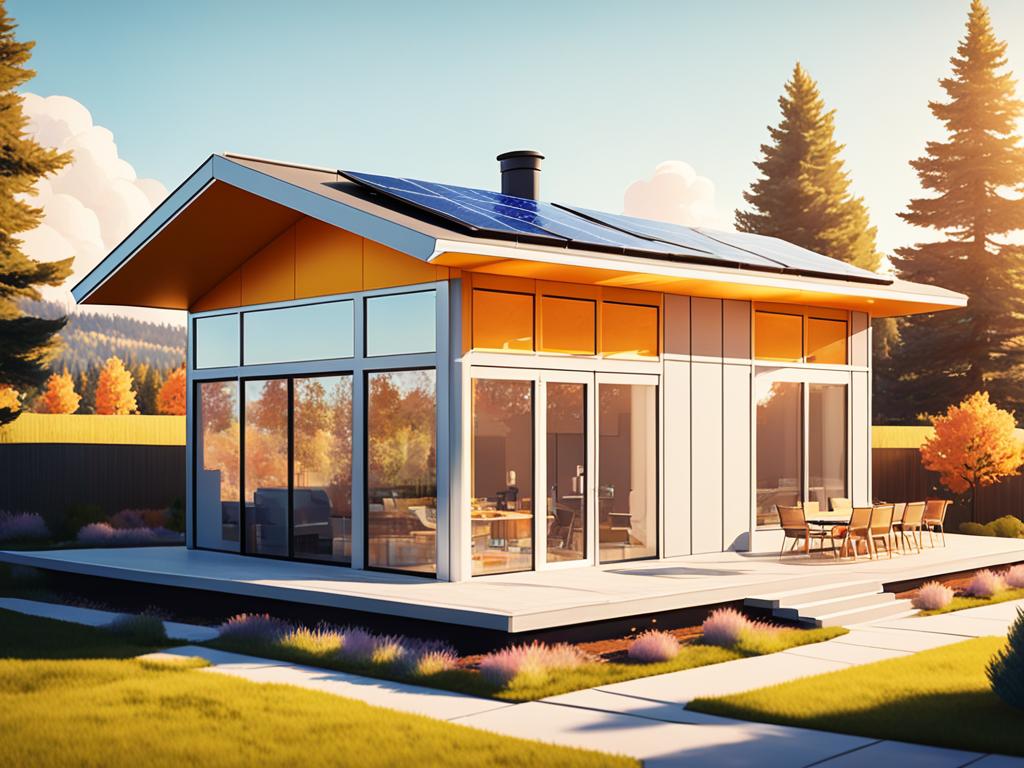
Efficient Design and Insulation
Energy efficiency is further enhanced through the house’s sustainable design and insulation. The Model D house undergoes meticulous planning to optimize insulation and minimize heat loss. This ensures that warmth remains inside the house during colder months, reducing the need for excessive heating.
The efficient insulation of the walls, floors, and roof creates a thermally efficient barrier, keeping the interior comfortable and reducing energy consumption. Homeowners can relish in the knowledge that their heating costs are minimized, while still enjoying a warm and cozy living environment.
The combination of the woodburning stove, solar panels, and efficient insulation work synergistically to create a sustainable and energy-efficient home. The Model D house not only provides a comfortable living space but also offers homeowners the opportunity to minimize their impact on the environment while reducing their energy bills.
Local and Community Impact
Bryan Stuart’s motivation in designing and building the Model D house was to address the lack of affordable housing in rural communities. As a local councillor, he understood the impact this housing issue had on the social mix of the community. The Model D house serves as a prototype for affordable self-build homes and provides a solution to the housing crisis in rural areas. The house has gained approval from planners for its sustainable design and low visual impact on the countryside.
- By creating affordable housing options, Bryan Stuart’s Model D house contributes to the well-being and economic growth of the local community.
- The availability of affordable housing helps attract and retain a diverse range of residents, promoting a healthy social mix in rural areas.
- The sustainable design of the Model D house aligns with the values and environmental consciousness of the local community, fostering a sense of pride and belonging.
- By tackling the issue of rural housing affordability, Bryan Stuart’s initiative enhances the overall livability and resilience of the community.
- The approval from planners highlights the positive impact and viability of affordable housing solutions, paving the way for similar initiatives in other areas.
Future Developments and Collaboration
Bryan Stuart and Professor Gokay Deveci, along with their dedicated teams, are committed to advancing the development of the Model D house. Their collaboration aims to create a range of variations that cater to specific needs and preferences. By incorporating valuable insights gained from building the prototype, they are continuously refining the design and streamlining the replication process for future projects. The shared vision is to offer affordable and sustainable housing options to families in need, fostering stronger and more resilient communities.
The team’s ongoing efforts in future developments and collaboration signify an unwavering commitment to addressing the pressing issue of affordable housing in rural areas. By pooling their expertise and resources, they are poised to bring innovative solutions to the market, empowering individuals and families with the opportunity to own a comfortable, energy-efficient, and customisable home.
The journey towards more inclusive and sustainable housing continues, as Bryan Stuart and Professor Gokay Deveci leave no stone unturned in their pursuit of excellence. With each new variation of the Model D house, they strive to create a lasting impact on the lives of those in need and set a new benchmark for affordable housing.
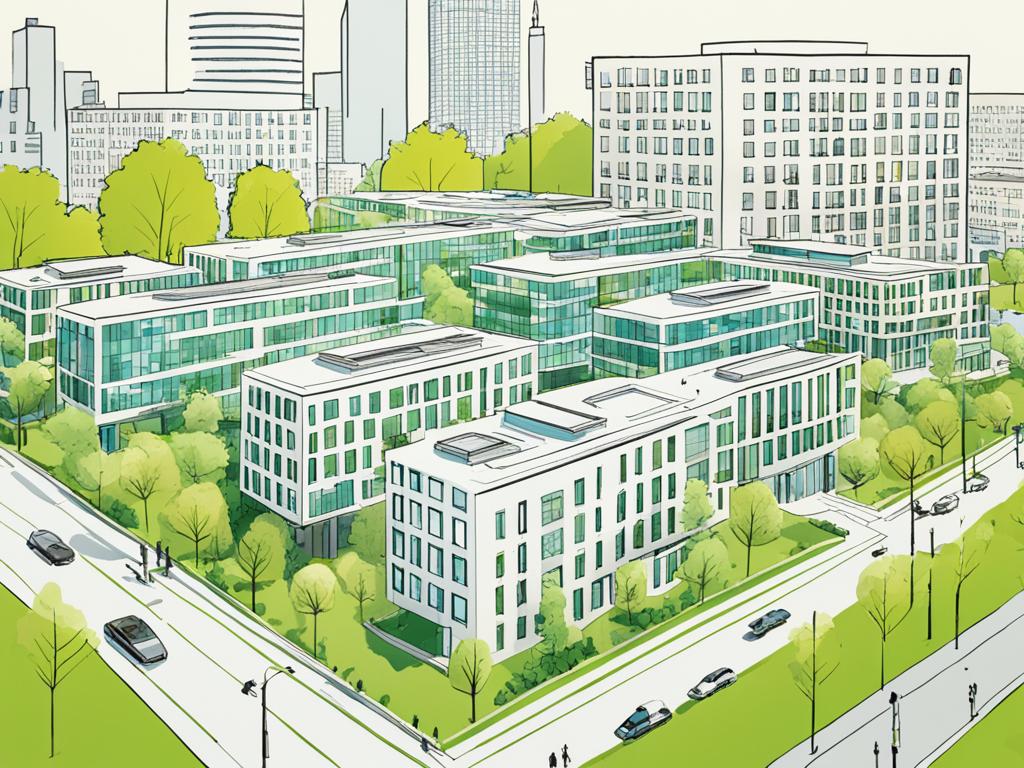
- Continued refinements in design based on user feedback and changing needs.
- Exploration of alternative sustainable materials to further enhance environmental friendliness.
- Potential integration of smart home technologies for improved energy efficiency and convenience.
- Customization options to cater to individual preferences, allowing homeowners to create their dream space while staying within budget.
- Expansion of the Model D house concept to other regions, providing affordable housing solutions to a wider demographic.
Conclusion
Bryan Stuart’s Model D house is a groundbreaking achievement in the realm of affordable and sustainable housing. This innovative prefab home showcases the perfect fusion of sustainable design and local craftsmanship, utilizing Scottish timber and cutting-edge construction techniques to create a comfortable and energy-efficient living space.
With its low running costs and eco-friendly features, the Model D house is a viable solution to the growing need for affordable housing in rural communities. Its approval from planners highlights its adherence to sustainable development principles without compromising on aesthetics.
Continuing their collaboration, Bryan Stuart and Professor Gokay Deveci strive to expand on the success of the Model D house by introducing a variety of variations to cater to the diverse needs of potential homeowners. By customizing the design, these prefab homes can be tailored to different lifestyles and preferences, further cementing their position as an ideal choice for anyone seeking affordable and sustainable housing.
FAQ
What is the Bryan Stuart Prefab House?
The Bryan Stuart Prefab House is a prototype for affordable timber kit houses designed and built by local councillor Bryan Stuart in rural Aberdeenshire. It aims to address the lack of affordable housing in rural communities.
What is the design and build process of the Bryan Stuart Prefab House?
Bryan Stuart worked with Professor Gokay Deveci from Robert Gordon University to create the Model D house. The construction process took around four years, but future self-builders can expect a timeline of 12 to 16 weeks.
What sustainable materials and features does the Bryan Stuart Prefab House have?
The house is made entirely from Scottish timber, including Sitka spruce and Scots pine. The timber was heat treated in Finland for durability and low maintenance. The house also incorporates a double-stud wall and roof construction system for air tightness and Passivhaus standards. The external rain screening is made from heat treated larch.
What are the interior design and features of the Bryan Stuart Prefab House?
The interior features a neutral finish with pale paint hues and timber throughout. The floors downstairs are made of Douglas fir, while Scots pine has been used for the upstairs flooring. The house has high ceilings and large windows to maximize natural light. Cleverly integrated storage spaces are found in the bedrooms, and the open plan kitchen/living space creates a spacious and functional living area.
How energy efficient is the Bryan Stuart Prefab House?
The house is highly energy efficient due to its sustainable design and insulation. The main heat source is a woodburning stove, supplemented by a few electric heaters for occasional use. The house also features four solar panels on the roof, contributing to energy savings even in the winter months. This efficient design and insulation result in low heating costs and a comfortable living environment.
What is the local and community impact of the Bryan Stuart Prefab House?
Bryan Stuart designed the house to address the lack of affordable housing in rural communities. As a local councillor, he understood the impact this had on the social mix of the community. The Model D house serves as a prototype for affordable self-build homes and provides a solution to the housing crisis in rural areas. The house has gained approval for its sustainable design and low visual impact on the countryside.
What are the future developments and collaborations for the Bryan Stuart Prefab House?
Bryan Stuart continues to collaborate with Professor Gokay Deveci and his team to create different variations of the Model D house to suit specific needs and preferences. The experience gained from building his own home has helped refine the design and make it easier to replicate in the future. The goal is to provide affordable and sustainable housing options for families in need.
What are the key features and benefits of the Bryan Stuart Prefab House?
The Bryan Stuart Prefab House is a successful prototype for affordable and sustainable timber kit homes. It incorporates local Scottish timber and innovative construction techniques for energy efficiency and a comfortable living space. With its low running costs and approval from planners, the Model D house offers a solution to the lack of affordable housing in rural communities.

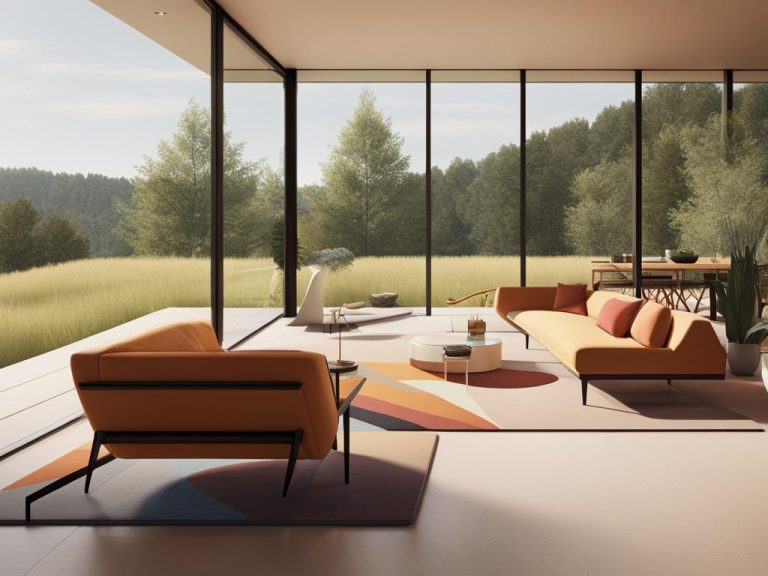

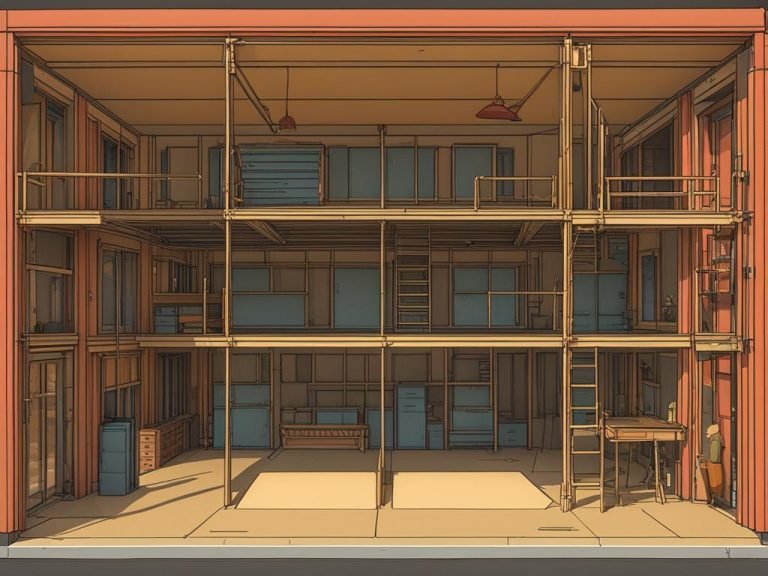
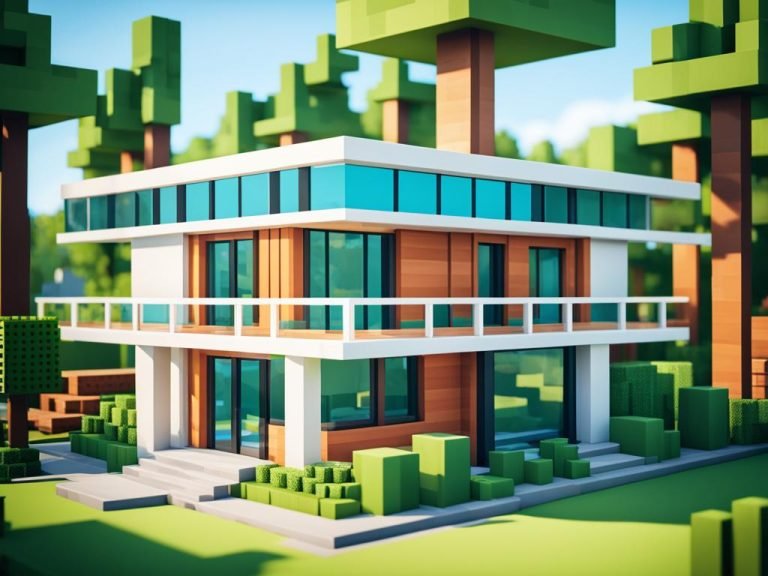
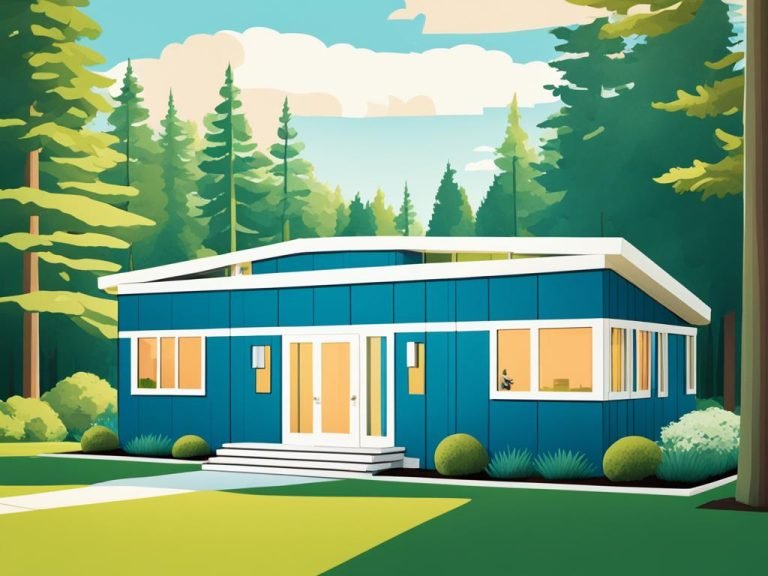
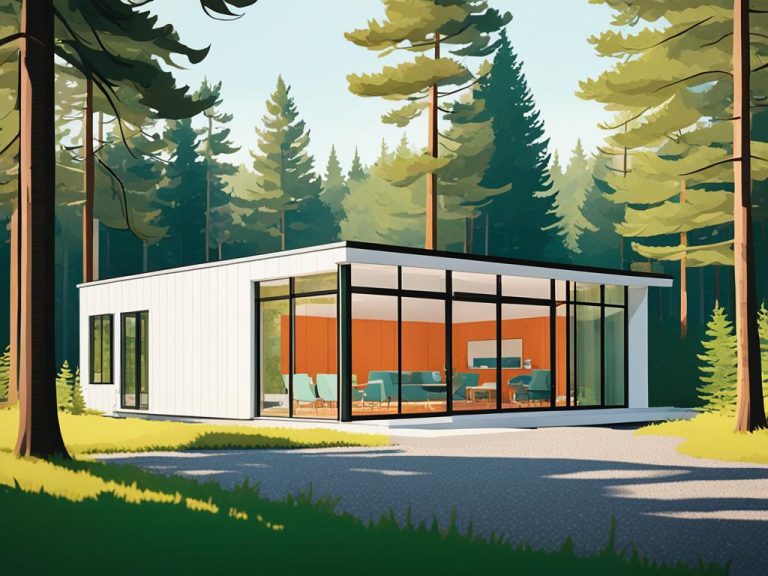
Optimizing Mulcher Rotor Balancing: Key to Equipment Performance
Thank you for your sharing. I am worried that I lack creative ideas. It is your article that makes me full of hope. Thank you. But, I have a question, can you help me? https://accounts.binance.com/register?ref=P9L9FQKY